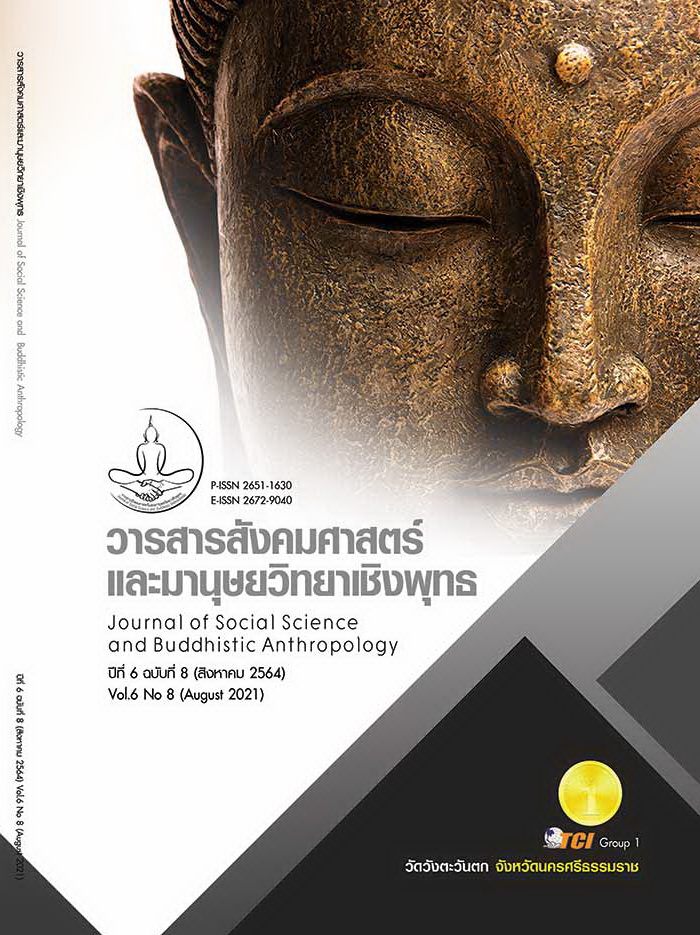STUDY OF COMPOSITION AND INDICATORS OF SMART TEACHERS IN PRIMIRY SCHOOL UNDER THE DEPARTMENT OF LOCAL ADMINISTRATION
Keywords:
Components Indicators and Approaches to Teacher Development, Smart Teachers, Primary Schools Department of Local AdministrationAbstract
The Objectives of this research article were to 1) study the composition and identifiers of high-performing teachers. In elementary school 2) To study the development of high-performance teachers. The samples were primary school teachers in schools under the local government organization. The sample size uses the finished table of Krejcie & Morgan The sample consisted of 200 school administrators, 175 teachers of academic leaders, and 375 of them were obtained by multistage randomization. The research instruments were semi-structured interview questionnaires, questionnaires, which were percentage, mean and standard deviation. Method of confirmation element analysis The research findings were as follows: 1) Composition and indicators of high-performing teachers In elementary school There are 4 components of the local government organization, and 15 indicators are as follows: 1) Academic outstandingness with 7 indicators such as academic strengthening, etc. 2) Professional expertise has 4 indicators, such as: Vision, etc. 3) The skills needed in the 21st century have two indicators, such as systematic thinking, etc. 4) adherence to goodness, there are two indicators, such as moral and ethical aspects. Affirmative found that 1) academic outstanding level, 2) professional expertise, 3) 21st century essential skills, and 4) adherence to virtue. At a high level, respectively 2) The results of the study of the high performance teacher development guidelines showed that there were 6 methods for developing high performance teachers: 1) Training 2) Teaching 3) Brainstorming 4) Small group meeting 5 ) Self-study 6) On-the-job learning
References
กระทรวงศึกษาธิการ. (2551). หลักสูตรแกนกลางการศึกษาขั้นพื้นฐาน พุทธศักราช 2551. กรุงเทพมหานคร: โรงพิมพ์ชุมนุมสหกรณ์ การเกษตรแห่งประเทศไทย.
กระทรวงศึกษาธิการ. (2554). คู่มือการประเมิน สมรรถนะครู. กรุงเทพมหานคร: กระทรวงศึกษาธิการ.
ธํารง บัวศรี. (2532). หลักการศึกษา. กรุงเทพมหานคร: แพร่วิทยา.
พชรวิทย์ จันทร์ศิริสิร. (2562). สมรรถนะและการจัดการเชิงกลยุทธ์. ใน วิทยานิพนธ์ศึกษาศาสตรมหาบัณฑิต สาขาวิชาการบริหารและพัฒนาการศึกษา. มหาวิทยาลัยมหาสารคาม.
ยอดอนงค์ จอมหงส์พิพัฒน์ . (2558). การพัฒนาโปรแกรมการพัฒนาครูผู้นําการจัดการเรียนรู้ ตามแนวทางปฏิรูปการศึกษา. วารสารการวิจัยทางการศึกษา, 3(1), 56-69.
วาสนา มะณีเรือง และคณะ. (2559). รูปแบบการพัฒนาครูเก่งครูดีของสถานศึกษาขั้นพื้นฐาน. วารสารสันติ ศึกษาปริทรรศน์ มจร, 30(2), 260 - 278.
สำนักงานคณะกรรมการการศึกษาขั้นนฐาน. (2553). คู่มือการประเมินสมรรถนะครู. กรุงเทพมหานคร: โรงพิมพ์คุรุสภา ลาดพร้าว.
สำนักงานเลขาธิการสภาการศึกษา. (2551). สมรรถนะครูและแนวทางการพัฒนาครูในสังคมที่เปลี่ยนแปลง. กรุงเทพมหานคร: พริกหวานกราฟฟิค.
Barr, M. J. & Keating, L. A . (1990). Developing Effective Student Services Pro grams Systematic Approaches for Practitioners. San Francisco: Jossey Bass.
Krejcie, R. V. & Morgan, D. W. (1970). Determining sample size for research activities. Educational and Psychological Measurement, 30 (3), 608-609.








